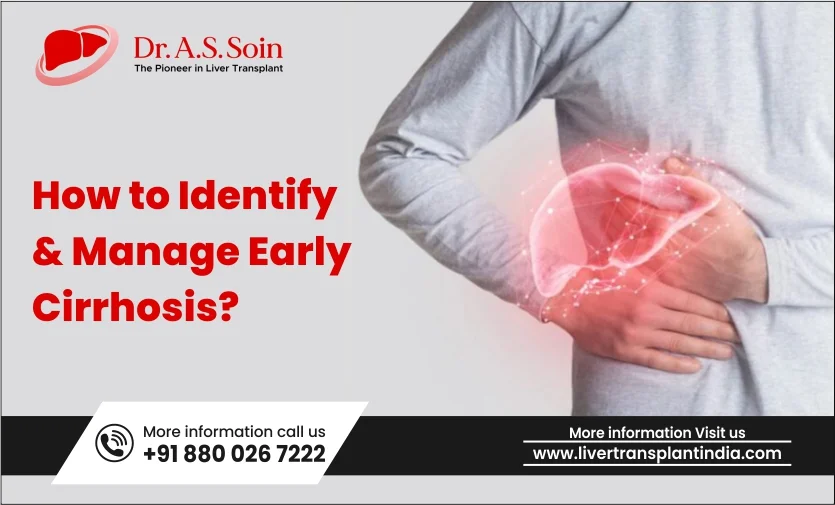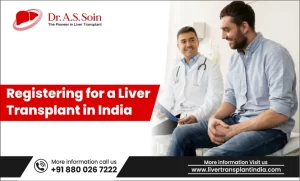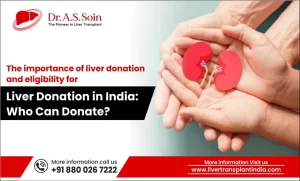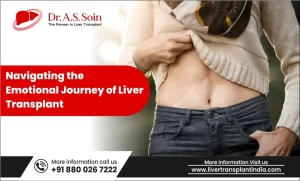Cirrhosis, an advanced stage of liver fibrosis, can result from various liver diseases, including prolonged alcohol consumption and hepatitis. Early detection and prompt treatment are crucial to halting further liver damage and complications. This guide covers the signs, diagnostic methods, and treatment options for early-stage cirrhosis.
Table of Contents
ToggleUnderstanding Cirrhosis
Cirrhosis is a progressive disease where healthy liver cells are gradually replaced by scar tissue, often due to infections, other illnesses, or alcohol abuse. While liver damage is typically irreversible, early detection can enable effective management to control complications.
Compensated cirrhosis, also known as early-stage cirrhosis, often shows no symptoms, making diagnosis challenging without medical testing. At this stage, the liver can still function adequately due to sufficient healthy cells, allowing patients to remain asymptomatic for an extended period.
As cirrhosis progresses, liver function declines, leading to serious health issues. Most individuals with early-stage cirrhosis do not exhibit symptoms initially, with diagnosis typically made through routine blood tests and medical examinations. A combination of laboratory tests and imaging studies helps confirm the diagnosis.
Identifying Early Cirrhosis
Early-stage cirrhosis may present with subtle symptoms that can mimic other conditions, underscoring the importance of consulting a healthcare provider if symptoms arise. Signs may include:
- Fatigue and Weakness: Persistent tiredness is often among the first symptoms.
- Loss of Appetite and Weight: Decreased appetite and unexplained weight loss may indicate liver dysfunction.
- Nausea and Vomiting: Frequent nausea and occasional vomiting can occur.
- Abdominal Swelling and Discomfort: Pain or discomfort in the upper right abdomen.
- Jaundice: Yellowing of the skin and eyes due to elevated bilirubin levels.
- Spider Angiomas: Small, spider-like blood vessels visible on the skin.
- Other Symptoms: Less common symptoms may include persistent itching, easy bruising and bleeding due to reduced clotting factors, and swelling of the legs and ankles from decreased protein production.
Diagnosing Liver Cirrhosis
Diagnosis involves a thorough medical history and physical examination to identify risk factors such as alcohol use, hepatitis infection, or family history of liver disease. Medical tests include:
- Liver Function Tests (LFTs): Measures liver enzyme levels (AST, ALT), bilirubin, and albumin.
- Complete Blood Count (CBC): Detects abnormalities in blood cells.
- Coagulation Profile: Assesses clotting ability, often impaired in cirrhosis.
- Imaging Studies: Ultrasound, CT scan, or MRI to evaluate liver structure and detect complications.
- Elastography: Measures liver stiffness, an indicator of fibrosis. Recent advancements in transient elastography (FibroScan) have enhanced non-invasive fibrosis assessment, providing accurate staging without the need for liver biopsies .
- Liver Biopsy: May be necessary to confirm cirrhosis and determine its severity, although non-invasive methods are increasingly preferred.
Liver Cirrhosis Treatment & Management
Treatment aims to slow the progression of liver scarring, alleviate symptoms, and prevent complications. Approaches include:
- Lifestyle Changes: Cease alcohol consumption, adopt a balanced diet rich in fruits, vegetables, and lean proteins, reduce salt intake to manage fluid retention, and engage in moderate physical activity.
- Medications: Antiviral drugs for hepatitis infections, diuretics to reduce fluid buildup, and beta-blockers to lower portal hypertension and prevent variceal bleeding. Newer therapies, such as FXR agonists and anti-fibrotic agents, are being investigated for their potential to halt or reverse fibrosis .
- Regular Monitoring: Follow-up appointments are essential for monitoring liver function, including physical exams, imaging tests, and blood work.
- Managing Complications: Techniques to manage ascites (fluid buildup in the abdomen), interventions for esophageal bleeding, and treatments for hepatic encephalopathy and infections. Advances in interventional radiology offer minimally invasive options for managing varices and portal hypertension .
Importance of Early Detection and Treatment
Early detection allows for timely intervention, potentially delaying disease progression and improving long-term outcomes. With proper management and lifestyle adjustments, individuals with early-stage cirrhosis can maintain a good quality of life and reduce the risk of severe complications such as liver cancer or failure. Regular surveillance for hepatocellular carcinoma (HCC) using ultrasound and alpha-fetoprotein (AFP) levels is critical for early detection of liver cancer .
Latest Scientific Data
Recent advancements in cirrhosis management emphasize the role of non-invasive tests and personalized treatment plans. FibroScan, a non-invasive elastography technique, is increasingly used to assess liver stiffness and fibrosis, reducing the need for liver biopsies . Studies have also shown that direct-acting antiviral (DAA) therapy for hepatitis C can lead to significant improvements in liver function and fibrosis regression, even in patients with cirrhosis .
Moreover, research on gut microbiota and its impact on liver health is emerging, suggesting that probiotics and dietary modifications can potentially modulate liver inflammation and fibrosis progression . Precision medicine approaches, including genetic profiling, are also being explored to tailor treatments based on individual patient characteristics and disease etiology .
Outlook for Individuals with Early Cirrhosis
Those diagnosed early typically have better prognoses compared to those with advanced disease. Through dedicated adherence to treatment and lifestyle modifications, many patients experience improved liver function and overall health. For severe cases, liver transplantation may be considered, ensuring individualized care and optimal outcomes under expert guidance. Advances in transplant techniques and post-operative care have significantly improved survival rates and quality of life for transplant recipients .
Conclusion
Effective management of cirrhosis hinges on early recognition of symptoms, accurate diagnosis, and a personalized treatment plan. Collaborating closely with healthcare providers is crucial to implementing effective strategies for long-term liver health.
FAQs
Can early signs of cirrhosis be reversed?
While cirrhosis itself is irreversible, early intervention can mitigate damage and improve liver function.
Is liver transplantation necessary for early cirrhosis?
Early-stage cirrhosis can often be managed effectively with medications and lifestyle changes, without requiring transplantation.
How often should individuals with early-stage cirrhosis see their doctor?
Regular check-ups every three to six months are recommended to monitor liver function and address any emerging issues promptly.








